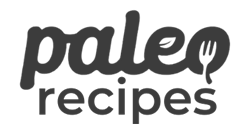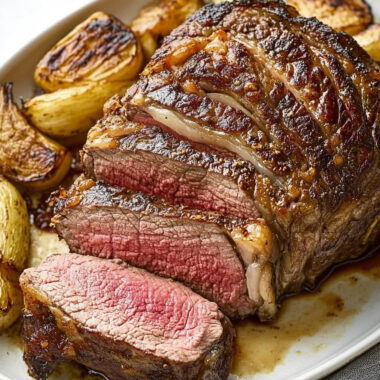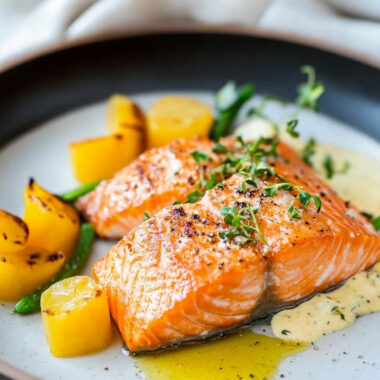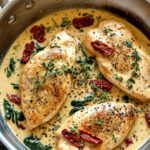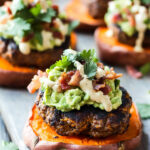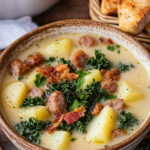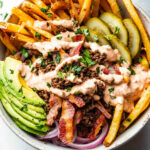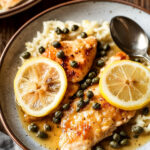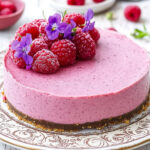If you’re on the hunt for a delicious and healthy meal that fits perfectly into a paleo lifestyle, look no further than pan-seared salmon. This dish is not only easy to prepare but also packed with nutrients, making it an ideal choice for a quick weeknight dinner or a special occasion. In this article, I’ll guide you through the process of making the perfect Paleo Pan-Seared Salmon, highlighting its health benefits and sharing some tips to ensure your salmon turns out perfectly every time.
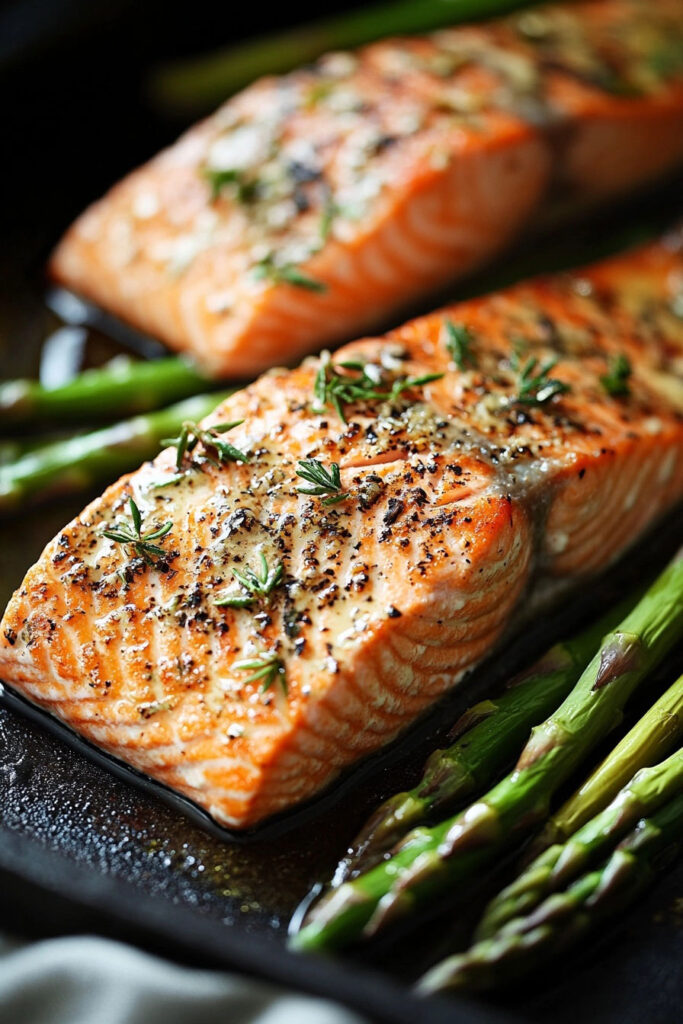
Why Choose Salmon?
Salmon is a powerhouse of nutrition. It’s rich in Omega-3 fatty acids, which are essential for heart health, and it’s an excellent source of high-quality protein. These nutrients make salmon a staple in many healthy diets, including paleo. Wild-caught salmon is especially beneficial as it contains higher levels of nutrients compared to farmed varieties[1][2].
Ingredients You’ll Need
To make this delightful dish, you’ll need the following ingredients:
- 4 salmon fillets (4-6 ounces each)
- 1 tablespoon olive oil
- 3 tablespoons butter (or ghee for a paleo-friendly option)
- 1 1/2 teaspoons minced garlic
- 2 teaspoons lemon juice
- Salt and pepper to taste
- 1 tablespoon chopped parsley
These simple ingredients come together to create a flavorful and satisfying meal that highlights the natural taste of salmon.
Cooking Instructions

Step 1: Prepare Your Salmon
Start by patting the salmon fillets dry with a paper towel. This step is crucial for achieving a crispy skin. Season both sides of the fillets with salt and pepper to taste.
Step 2: Sear the Salmon
Heat the olive oil in a large skillet over medium-high heat until it’s hot but not smoking. Place the salmon fillets in the pan, skin side up. Cook them undisturbed for about 5 minutes, allowing a golden brown crust to form.
Step 3: Flip and Finish Cooking
Carefully flip the salmon fillets and continue cooking for another 5-6 minutes until they are opaque and easily flake with a fork.
Step 4: Make the Sauce
Remove the salmon from the pan and set aside. Add butter to the pan and let it melt over medium-low heat. Stir in minced garlic and cook for about 30 seconds, being careful not to burn it. Add lemon juice, salt, and pepper to taste.
Step 5: Serve
Return the salmon to the pan and spoon the sauce over each fillet. Sprinkle with chopped parsley before serving.
This method ensures that your salmon is perfectly cooked every time—crispy on the outside and tender on the inside[3][4].
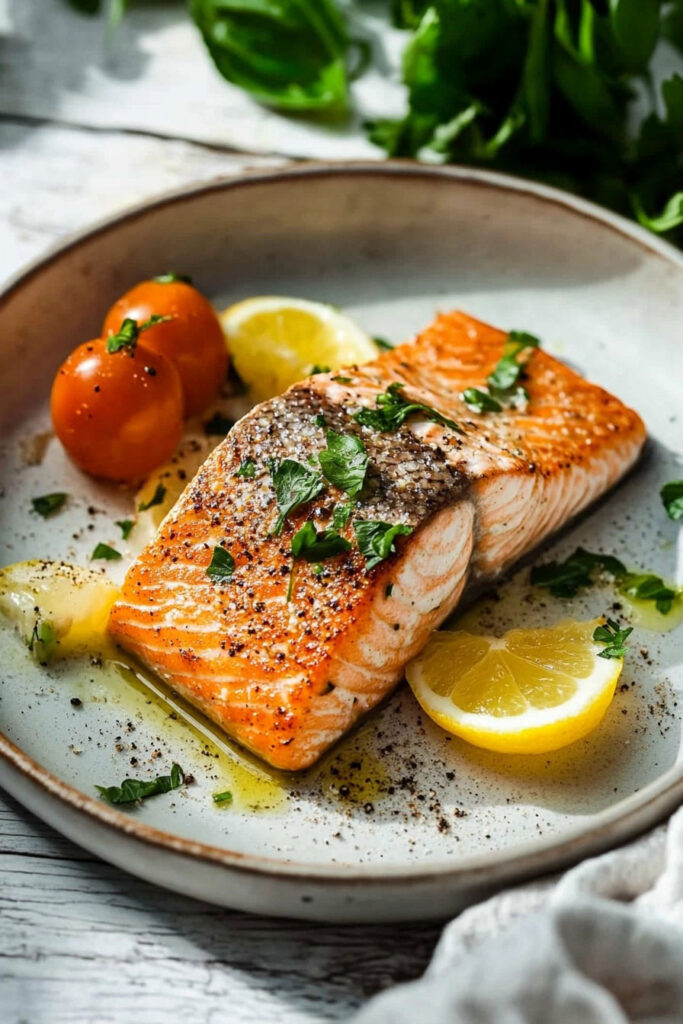
Tips for Perfect Pan-Seared Salmon
- Choose Quality Fillets: Opt for wild-caught salmon if possible; it’s more flavorful and nutritious.
- Pat Dry: Ensure your salmon is dry before cooking to achieve that coveted crispy skin.
- Don’t Overcrowd the Pan: Give each fillet enough space in the pan to cook evenly.
- Use High Heat: A hot pan is essential for searing; it helps develop a beautiful crust without overcooking.
With these tips in mind, you’re well on your way to mastering this simple yet sophisticated dish. Whether you’re new to cooking or an experienced chef, pan-seared salmon is a versatile recipe that can be adapted with different herbs or spices to suit your taste.
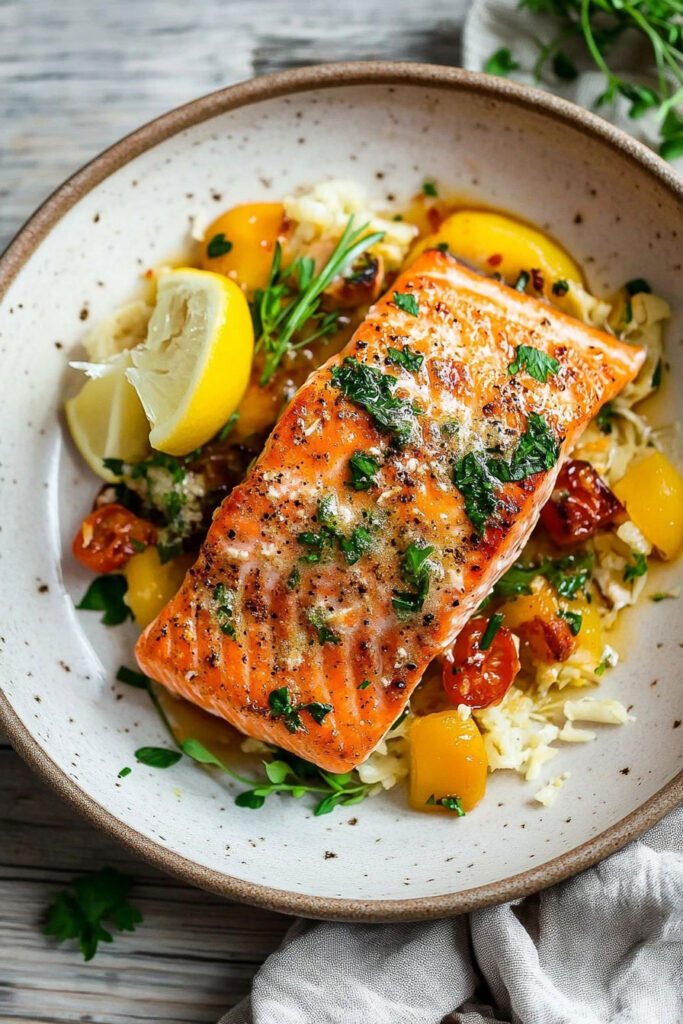
Health Benefits of Paleo Pan-Seared Salmon
Embracing a paleo lifestyle often means focusing on whole, unprocessed foods that our ancestors might have eaten. Salmon fits perfectly into this diet due to its rich nutrient profile and health benefits. Let’s dive deeper into why incorporating salmon into your meals can be a game-changer for your health.
Nutritional Powerhouse
Salmon is renowned for its high Omega-3 fatty acid content. These essential fats are crucial for maintaining heart health, reducing inflammation, and supporting brain function. Additionally, salmon is an excellent source of high-quality protein, which is vital for muscle repair and growth.
- Omega-3 Fatty Acids: These help lower blood pressure, reduce triglycerides, and decrease the risk of heart disease.
- Protein: Essential for building and repairing tissues, making it a great choice for those who are active or looking to maintain muscle mass.
- Vitamins and Minerals: Salmon is rich in B vitamins, potassium, selenium, and antioxidants like astaxanthin, which contribute to overall health.
Cooking Variations
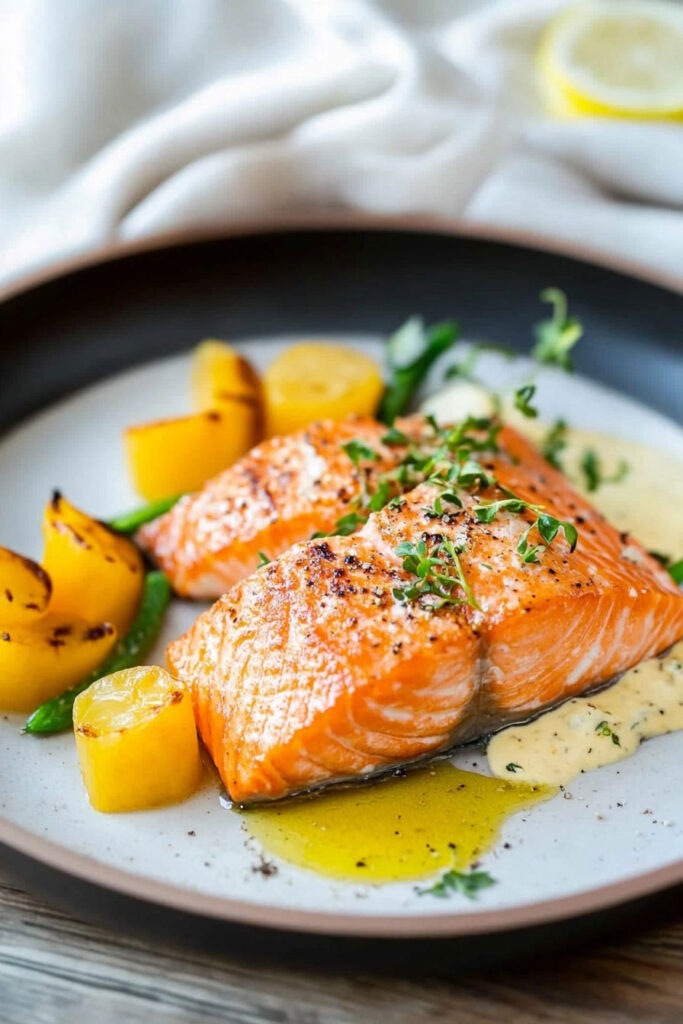
While the classic pan-seared method is a favorite, there are several ways you can vary this recipe to keep things interesting:
- Herb-Crusted Salmon: Add a crust of your favorite herbs like dill or thyme for an aromatic twist.
- Spicy Kick: Sprinkle some cayenne pepper or paprika before cooking for a bit of heat.
- Citrus Infusion: Add orange or lime zest to the butter sauce for a refreshing citrus flavor.
These variations allow you to enjoy different flavors while still benefiting from the nutritional value of salmon.
By incorporating Paleo Pan-Seared Salmon into your diet, you’re making a choice that supports both your health and the environment. This dish not only satisfies your taste buds but also aligns with a lifestyle focused on wholesome eating. Whether you’re new to paleo or a seasoned enthusiast, this recipe is sure to become a staple in your meal rotation.
Mastering the Art of Cooking Salmon
Cooking salmon to perfection requires a bit of technique, but with practice, you can achieve restaurant-quality results at home. Here, I’ll share some insights on how to master the art of cooking salmon, ensuring that every fillet is cooked to perfection.
The Importance of Temperature
One of the key factors in cooking salmon is temperature control. Using a medium-high heat allows the salmon to develop a crispy skin while keeping the inside moist and tender. A hot pan is essential for creating that beautiful golden crust without overcooking the fish.
- Internal Temperature: For perfectly cooked salmon, aim for an internal temperature of 125°F to 130°F for medium-rare. This ensures the salmon remains juicy and flavorful.
- Resting Time: Allow the salmon to rest for a few minutes after cooking. This helps the juices redistribute throughout the fillet, enhancing its flavor and texture.
Pairing Suggestions
Salmon pairs beautifully with a variety of side dishes and sauces. Here are some ideas to complement your meal:
- Vegetables: Roasted asparagus or Brussels sprouts add a nice crunch and contrast to the rich salmon.
- Salads: A fresh green salad with lemon vinaigrette can lighten up the meal.
- Grains: Although not strictly paleo, quinoa or cauliflower rice can be great accompaniments.
These pairings enhance the flavors of your Paleo Pan-Seared Salmon and provide a balanced meal that’s both satisfying and nutritious.
Frequently Asked Questions
1. Can I use frozen salmon fillets for this recipe?
Yes, you can use frozen salmon fillets. Just make sure to thaw them completely in the refrigerator before cooking to ensure even cooking and the best texture.
2. What can I substitute for butter to keep it strictly paleo?
To keep the recipe paleo, you can substitute butter with ghee or coconut oil. Both alternatives will provide a rich flavor and are suitable for high-heat cooking.
3. How do I know when my salmon is done?
Salmon is done when it flakes easily with a fork and is opaque throughout. For precise cooking, use a meat thermometer to check that the internal temperature has reached 125°F to 130°F for medium-rare.
4. Can I add other herbs or spices to the recipe?
Absolutely! Feel free to experiment with different herbs and spices like dill, thyme, or paprika to suit your taste preferences.
5. How should I store leftover salmon?
Store any leftover salmon in an airtight container in the refrigerator for up to 2 days. Reheat gently in a skillet over low heat or enjoy it cold in salads.
Conclusion
Paleo Pan-Seared Salmon is not just a meal; it’s an experience that combines simplicity with sophistication. By using fresh ingredients and mastering basic cooking techniques, you can create a dish that’s both nutritious and delicious. Whether you’re following a paleo diet or simply looking for a healthy meal option, this recipe is sure to become a favorite in your culinary repertoire.
Remember, the key to perfect salmon lies in quality ingredients, proper technique, and a bit of patience. With these elements in place, you’ll be able to enjoy restaurant-quality salmon right at home.
Thank you for joining me on this culinary journey. I hope this guide inspires you to explore new flavors and techniques in your kitchen!
